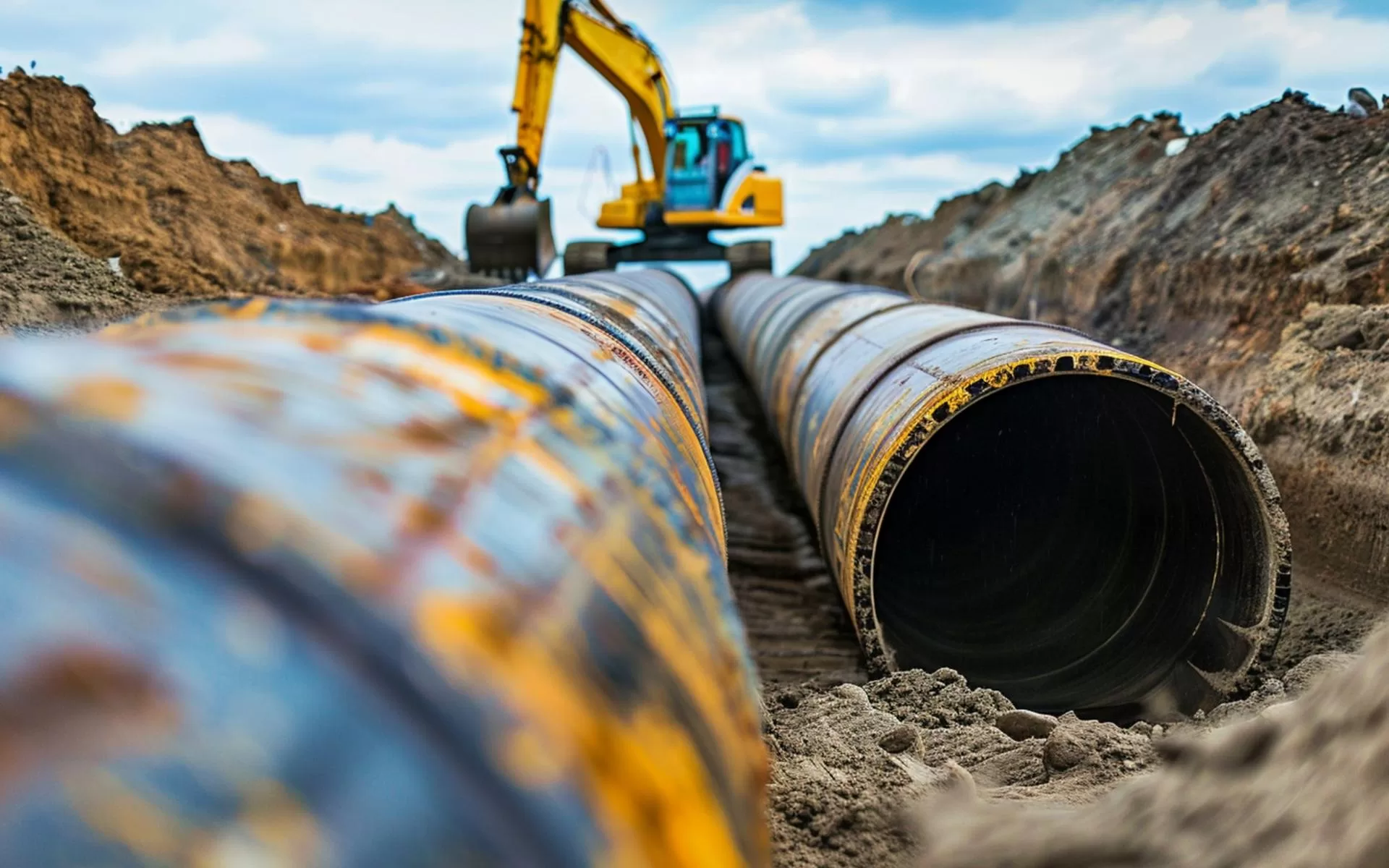
By Deo Bukenya
Pipelines are the silent lifelines of modern infrastructure, transporting essential fluids and even solids over vast distances with remarkable efficiency. From oil and gas to water and slurry, these intricate networks play a vital role in sustaining industries and communities alike. Some pipelines are massive, with diameters exceeding 63 inches, showcasing the scale of engineering behind them.
In Uganda, the story of pipelines dates back to the 1930s, when the first piped water systems were introduced. Today, this network has grown to over 20,000 kilometres, carrying water at pressures of up to 21 barg (unit of pressure) through pipes as wide as 56 inches. Built from steel, ductile iron, Polyvinyl chloride (PVC), and chlorinated polyvinyl chloride (CPVC), these pipelines are meticulously designed and connected using bolted flanges, mechanical connectors, and threaded ends to ensure reliability and efficiency.
Oil and gas pipelines, on the other hand, are relatively new in Uganda. They are designed to meet stringent safety standards and can withstand pressures of up to 200 barg. Unlike water pipelines, oil and gas pipelines are constructed by welding together sections of pipe, known as line pipes, which are typically 12 or 18 meters long.
Several oil and gas pipelines are currently under development in Uganda, demonstrating the remarkable progress in the country’s oil and gas infrastructure. These pipelines will facilitate the transportation of oil and gas resources for various purposes. Among them are flowlines, which connect directly to oil wells and transport crude oil in its mixed state—a combination of oil, water, gas, and sand—to central processing facilities. At these facilities, the different components are separated, and the crude oil and natural gas are stabilised. As part of the Tilenga Project in Buliisa and Nwoya Districts and the Kingfisher Project in Kikuube District, approximately 194 kilometres of flowlines are currently under construction.
The second type of pipelines under development are the feeder pipelines. These are approximately 144 km of pipelines and will transport the stabilised crude oil from the central processing facilities in Buliisa and Kikuube to the Kabaale (Hoima) hub where the crude oil from the two projects will be commingled and distributed to the planned refinery and the East African Crude Oil Pipeline (EACOP). Relatedly the third pipeline under development is the 1,443-kilometre-long transmission pipeline – the EACOP which will be transporting Uganda’s crude oil to a marine storage and distribution terminal at Tanga in Tanzania to access the international oil market. These are steel pipelines with a capacity to withstand up to 150 barg of pressure. They are electrically heat-traced and thermally insulated to maintain the crude oil thermal properties required to facilitate its movement within the pipelines. These pipelines are currently under construction.
The construction of the EACOP will involve welding 80,000-line pipes, each 18 meters long and 24-inches in diameter. The EACOP has been designed to withstand a pressure of up to 150 barg, with the wall thickness increased for additional safety where the pipeline crosses other infrastructure, wetlands, and rivers.
All the pipelines indicated above will be installed with robust leak and intrusion detection systems and will be controlled and monitored in real-time using Supervisory Control and Data Acquisition (SCADA) systems in the control rooms.
The other planned pipelines in Uganda include a multiproduct pipeline that will be developed to transport refined oil products (kerosene, diesel, petrol, and jet Fuel) from the planned refinery in Hoima to a storage and distribution terminal in Namwabula, Mpigi. There are also plans for a multiproduct pipeline with reverse-flow capabilities to connect this storage and distribution terminal to the terminal in Eldoret, Kenya, and another pipeline connecting it to Kigali, Rwanda. Plans to undertake studies to ascertain the feasibility of a natural gas pipeline from Tanzania to Uganda are also underway. The gas pipeline would be crucial in the development of Uganda’s iron ore smelting industry.
The pivotal role of pipelines in the development of Uganda’s oil and gas industry and commercialisation of its oil resource cannot be emphasised enough. They are the arteries and veins driving the commercialisation of the Ugandan oil industry. All the efforts in the design and development of these pipelines are geared towards ensuring that they are structurally robust, operationally safe to people and the environment, and compliant with the best pipeline industry practices.
The Author is a Senior Pipeline Engineer at the PAU
Email; corporateaffairs@pau.go.ug
